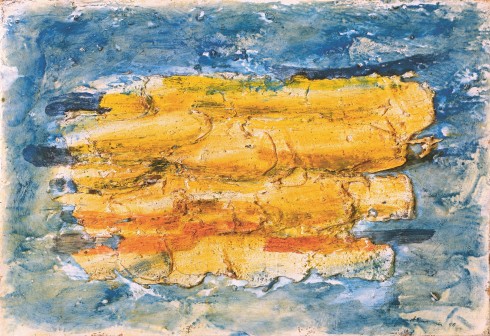When Jean Fautrier died in 1964 at the age of just sixty-six, he was one of the most influential artists for the emerging German Art Informel scene at the time. With the exhibition Jean Fautrier—Genie und Rebell (Jean Fautrier—Genius and Rebel), the Emil Schumacher Museum aims to put the spotlight back on this exceptional artist, who has not had a solo museum exhibition in Germany for forty years.
Yet he has never been forgotten. Fautrier has been present in almost every group exhibition on the Art Informel phenomenon from Düsseldorf to Paris and Tokyo, and his works are represented in major collections around the world, alongside those of his French contemporaries such as Wols and Jean Dubuffet. Despite his great importance, however, there has not been a comprehensive examination of his work in the form of a solo museum exhibition in Germany for far too long.
With this in mind, the exhibition at the Emil Schumacher Museum brings together works by Jean Fautrier from almost all of the artist’s creative phases, in particular from numerous German private collections, but also from international museums such as the Fondation Beyeler (Switzerland) and the museum of the Domaine départemental de Sceaux (France), as well as the Landesmuseum Oldenburg, the MKM—Museum Küppersmühle (Duisburg), the Museum Insel Hombroich (Neuss), and the Von der Heydt-Museum (Wuppertal). With over 1570 works, including around 70 paintings, more than 40 examples of his Originaux multiples, and around 30 sculptures representing almost his entire sculptural oeuvre, the show covers a broad spectrum that allows visitors to truly rediscover the painter.
The exhibition catalogue will be published in a bilingual edition (416 pages, German/English) by Verlag der Buchhandlung Walther und Franz König. The authors include Siegfried Gohr and Dieter Schwarz, who are both experts on Fautrier, and Katja Blomberg, who specialises in sculpture. Containing new research findings and approaching a catalogue raisonné of Fautrier’s sculptural oeuvre, the book will be an indispensable reference work for future study of the French artist, even beyond Germany’s borders.


